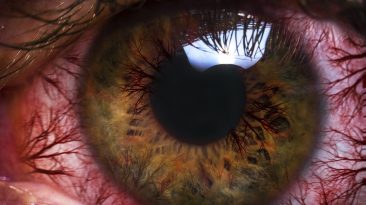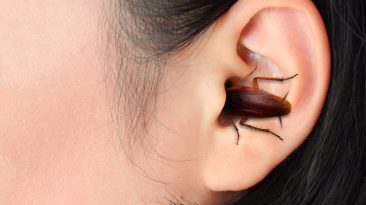Just one bite from a venomous snake could kill you. But what about drinking venom straight out of a glass? Cheers.
What does snake venom consist of? How would swallowing it be different than being bitten? And how long would it take to kill you?
When a venomous snake sinks its fangs, a complex mixture of toxic proteins, enzymes and other molecular substances is injected straight into your bloodstream. This is to disable you and break down your cells and tissues so you are easier to digest. A bite often leads to paralysis, internal bleeding and death. It’s not pretty. Snakebites kill 81,000 to 138,000 people worldwide every year. So would one sip of snake venom be your last?
If you were bitten by a poisonous snake, the venom would travel from the fangs and into your bloodstream within seconds. You’d have a low chance of survival. How it would go down depends on the type of venom. But let me get back to that in a moment.
Snake bites can be dangerous. But if you decided to drink the venom, the story would take a different turn. Snake venom is not the same as poison. The protein-based toxins of snake venom need to get into your bloodstream to cause substantial damage. If you swallowed it, your stomach acids and digestive enzymes would likely break it. It could be as if you never took a sip.
Wait, put the snake down. I didn’t say it would be completely safe. Drinking a shot of venom might not give you the same painful results as pouring it on your open wound. But it wouldn’t be harmless. Some could still make its way through your digestive system and into your bloodstream.
If it did, you’d experience something called coagulopathy. It’s a condition where the blood’s ability to clot is impaired. From there, it could go wrong very quickly. Remember how I said there were different types of snake venom?
If you ingested neurotoxic venom from cobra or mamba, and your stomach acid didn’t break it all down, this venom would start to block or over-stimulate your nervous system. This could lead to reduced eye movement, droopy eyelids and difficulty talking, swallowing and breathing.
Based on the neurotoxic effects of taipan snake venom, you’d be living through this venomous hell for five to 10 hours. It could take weeks for your nerves to repair. And it would leave you unable to breathe without external support.
If you drank enough of this venom to disrupt the chemical signals sent between your neurons, it would leave you paralyzed. It could even kill you. If you decided to take a sip of rattlesnake or copperhead’s juice, you’d be ingesting hemotoxic venom. If this venom made it into your bloodstream, it would primarily impact your blood and heart. This could lead to serious internal bleeding. Or it could cause blood cells to lump together, causing blockages and heart failure.
This type of venom can be found in snakes like vipers, rattlesnakes and more. Mycotoxins present in this type of venom could significantly damage your muscle cells or cause necrosis. You’d be going through a painful experience as the membranes of your muscle cells dissolved.
To make things worse, the venom proteins would leak into the urine and cause long-term damage to your kidneys. Your heart would lose its normal rhythm. The increased levels of potassium in your blood could cause your heart to stop.
Finally, if cytotoxic venom from your cobra-spiced drink got into your bloodstream, it would cause the premature death of cells in your tissues. Parts of your tissues could become liquified.
Cobras are a common example of snakes with cytotoxic venom.
These are all devastating effects that venom could have on your body. But ingesting venom could also play a role in developing human-derived anti-venoms. Rock and roll musician Steve Ludwin has been ingesting deadly snake venom in various ways for over 30 years.
He started this to see if he could become immune. And after years of drinking this stuff, his body developed an anti-venom. Anti-venom typically comes from horse blood. Some snakebite victims die because their bodies reject it. So a human-derived option is important. If you’re into dangerous cocktails, remember the development of anti-venom is expensive and not a priority for many pharmaceutical companies. Drinking venom simply wouldn’t be worth the risk.
Sources
- “Snake Venoms”. Costa, L.G., G. Giordano, and M. Aschner. 2014. Encyclopedia Of The Neurological Sciences, 227. doi:10.1016/b978-0-12-385157-4.00275-x.
- “Fascinating Venomous Sea Snake Facts”. Anne Marie Helmenstine, Ph.D. 2021. Thoughtco.
- “Poison pass: the man who became immune to snake venom”. 2018. The Guardian.
- “Snakebites Kill Around 200 People Per Day — Now The WHO Plans To Tackle The Problem – National | Globalnews.Ca”. 2021. Global News.
- “The Claim: You Can Treat A Snakebite By Sucking Out The Venom (Published 2004)”. 2004. nytimes.com.
- “Penetrability Of Orally Toxic Protein From Cobra Venom Through The Gut Of A Blowfly”. Primor, Naftali, Zvi Teitelbaum, and Eliahu Zlotkin. 1980. Biochimica Et Biophysica Acta (BBA) – General Subjects 627 (1): 71-81. doi:10.1016/0304-4165(80)90124-5.



























